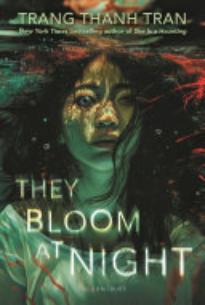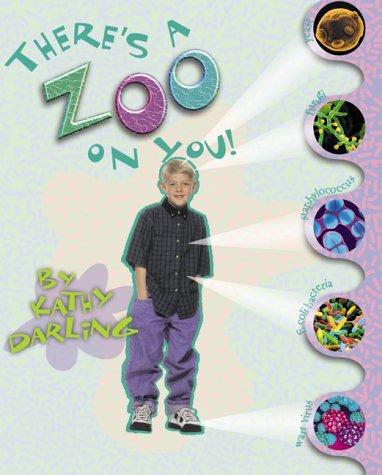Symbiosis
12 Reviews
(2)
YA
In the wake of a hurricane, a strange red algal bloom has taken over the waters of Mercy, Louisiana, where Noon ekes out a life capturing mutant sea creatures and trading them to the crooked harbormaster. As people go missing, rumors of a monster emerge, and Noon must hunt down the monster for the harbormaster or risk losing everything. The mission forces Noon to team up with the harbormaster's daughter to probe the mysteries haunting the town, all the while threatening to expose the monstrous things inside our own protagonist. Tran (She Is a Haunting) makes deft use of horror genre conventions to construct a narrative about how trauma shapes and changes people. The atmospheric, immersive descriptions of the setting underscore the vital symbiotic relationship between human and nature that gets ignored in the pursuit of capitalistic extraction. Noon's narrative perspective encourages identification with the shadowy Other of the monster. As a child of Vietnamese refugees, a queer person who feels out of place in their body (the occasional pronouns used in the first-person narration shift from she/her to they/them), and a survivor of sexual violence, Noon knows what it means to suffocate under the pressure of oppressive norms that seek to punish their self-expression and neutralize its subversive potential. Freeing the monster in themself means confronting their traumatic past and embracing their own power of unsettling.
(1)
K-3
This overview of ants combines cleverly designed graphics and a funny text to convey major concepts about the familiar insects. Expressive-eyed ants march across the pages, first in a show of their large numbers and then to illustrate key ant behaviors. These are succinctly introduced as "Ants love: Family. Micronaps. Recycling. Helping others. Being caught on camera carrying stuff way bigger than they are." Descriptions of ant colonies, cooperation, communication, and ants' role in creating soil follow. The page design is thoughtful and effective; one especially impressive double-page spread describing how ants communicate through pheromones features a sequenced scenario in which doughnut sprinkles are encountered by a single ant, who then leaves a pheromone trail to communicate the food location to the colony. Humorous yet still scientifically spot-on phrases pop up throughout ("Drone. Male. Does no housework. Takes to sky. Reproduces. Drops dead"). The final pages connect ant behaviors to another social species -- humans -- so that readers can be like ants and "leave the Earth in better shape than it was when you got here."
Reviewer: Danielle J. Ford
| Horn Book Magazine Issue:
March, 2024
(3)
K-3
In this assemblage of collective nouns, Rzezak uses the animal group names as a starting point for an exploration of communal behavior and its links to survival. So, for example, a "cast of spider crabs" protect one another during the vulnerable molting period, and "colonies of penguins" create nurseries for the communal care of their children. The illustrations, which cleverly use a stencil technique to combine uniform forms with slight individual variations, provide both beauty and welcome humor, which offsets the sophisticated and relatively staid prose. Glos.
Reviewer: Norah Piehl
(3)
K-3
Steve tells us his fellow sea creatures are afraid of him, though he's a small, inoffensive-looking fish. Eventually, he introduces his best friend, George--a shark. Back matter explains that Steve is a pilot fish who keeps sharks free of parasites in exchange for protection, a mutualistic relationship. An engaging direct-address text, humorous speech-bubble asides, and cartoony double-page-spread illustrations add up to success.
Reviewer: Martha V. Parravano
(4)
K-3
Illustrated by
Poly Bernatene.
Even though Bird makes a great umbrella, keeps Hippo "bug-free," and tells jokes ("I'm a hippopota-mustache"), Hippo repeatedly shoos Bird away. The nod toward symbiosis gets lost in the predictable reluctant-friends plot, and Hippo and Bird's reconciliation comes too suddenly to feel authentic. However, energetic mixed-media illustrations shift color to reflect Hippo's mood and expand on the limited dialogue-based narrative.
Reviewer: Rebecca Fox
(4)
K-3
Illustrated by
Shennen Bersani.
Each on a double-page spread, thirteen brief poems offer silly interpretations of animals' symbiotic relationships. The various rhyme schemes are mostly unsuccessful, but, paired with back matter explaining the scientific concept and differentiating between mutualism, commensalism, and parasitism, they are mildly entertaining vehicles for the information. Bersani's detailed, realistic illustrations are suitable. A matching activity is also appended. Bib.
Reviewer: Katrina Hedeen
(3)
K-3
Illustrated by
Steve Jenkins.
"How does a turtle keep a hippopotamus clean?" The answer to this question and other examples of symbiosis show how animals and plants benefit from natural partnerships within ecosystems. Though image reduction compromises clarity in some spreads, sharp paneled layouts frame Jenkins's colorful cut-paper illustrations. Reading list.
Reviewer: Danielle J. Ford
(4)
4-6
Fusion series.
These slim volumes cover life sciences concepts (heredity, symbiosis, animal behavior), delivering content in easy-to-read language, which is sometimes oversimplified and/or disorganized and therefore confusing. The many photographs and occasional charts will make this material approachable to some struggling readers, but the overall look will distract others. Reading list, websites. Glos., ind. Review covers these Fusion titles: Blame Your Parents, You Scratch My Back, and Animal Secrets.
Reviewer: David Elzey
(3)
K-3
Amazing Nature series.
Each book examines a different aspect of animal behavior. Appropriate for elementary-grade students, the clear, well-organized text features a wealth of information. Illustrated with color photos, each book also contains a two-page "Fact File." Reading list. Glos., ind. Review covers these Amazing Nature titles: Hidden Hibernators, Home Makers, Night Movers, Clever Camouflage, Perfect Partners, and Pesky Parasites.
Reviewer: Jim St. Claire
(3)
K-3
This book offers an overview of fourteen symbiotic animal relationships, such as that between rhinos and cattle egrets. Each pairing or group is profiled in two or three pages. The brief text provides a short description of the animals, what their functions are, and how they cooperate with their allies. The brightly colored illustrations feature anthropomorphized creatures, which may attract younger naturalists.
Reviewer: Jaynia B. Fink
(3)
4-6
An introductory chapter describes microorganisms living in the human body. Subsequent chapters discuss those living on the skin and in the respiratory and digestive systems. Margin notes provide definitions and pronunciation guides for scientific terms. The color microphotographs are striking, and the informal text tries to reassure readers of the normalcy of hosting these creatures. Ind.
Reviewer: Gail Hedges
(4)
4-6
Science Concepts series.
Published in spring 1998. Because of the varying complexity of the topics covered, this series is somewhat uneven. The books on evolution and photosynthesis, two key concepts in biology, stay close to the stated topic, while the books on symbiosis and food chains, more peripheral subjects, cover a broader range of material. Captioned color photographs accompany each clearly written text. Bib., glos., ind.
Reviewer: Elizabeth Howard
12 reviews
We are currently offering this content for free. Sign up now to activate your personal profile, where you can save articles for future viewing.
















